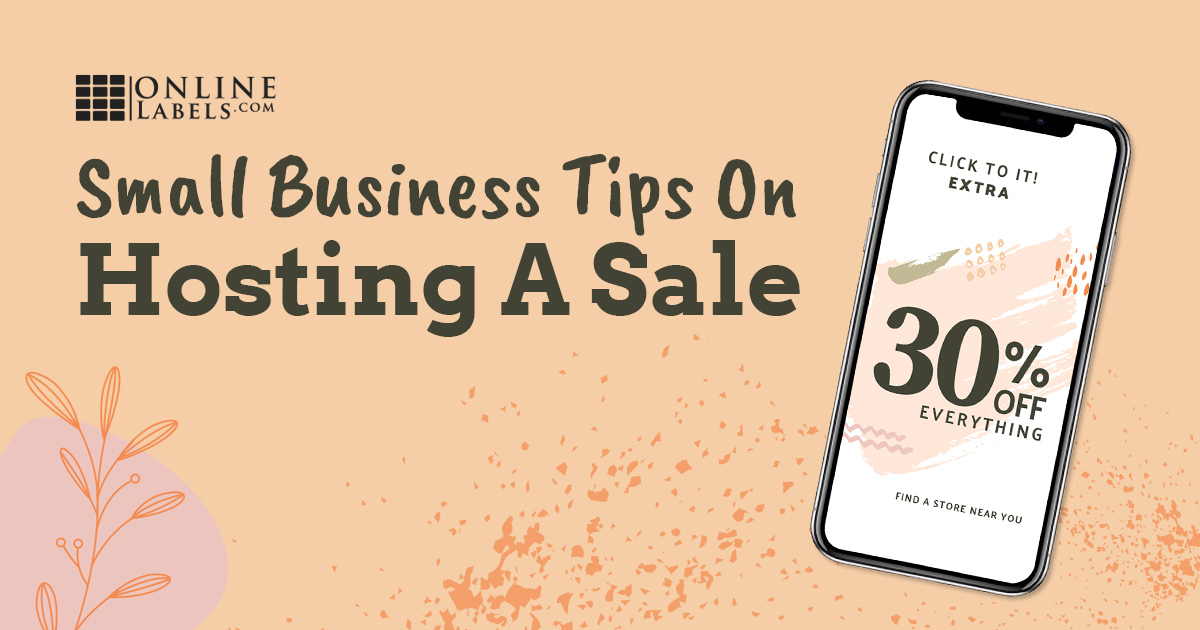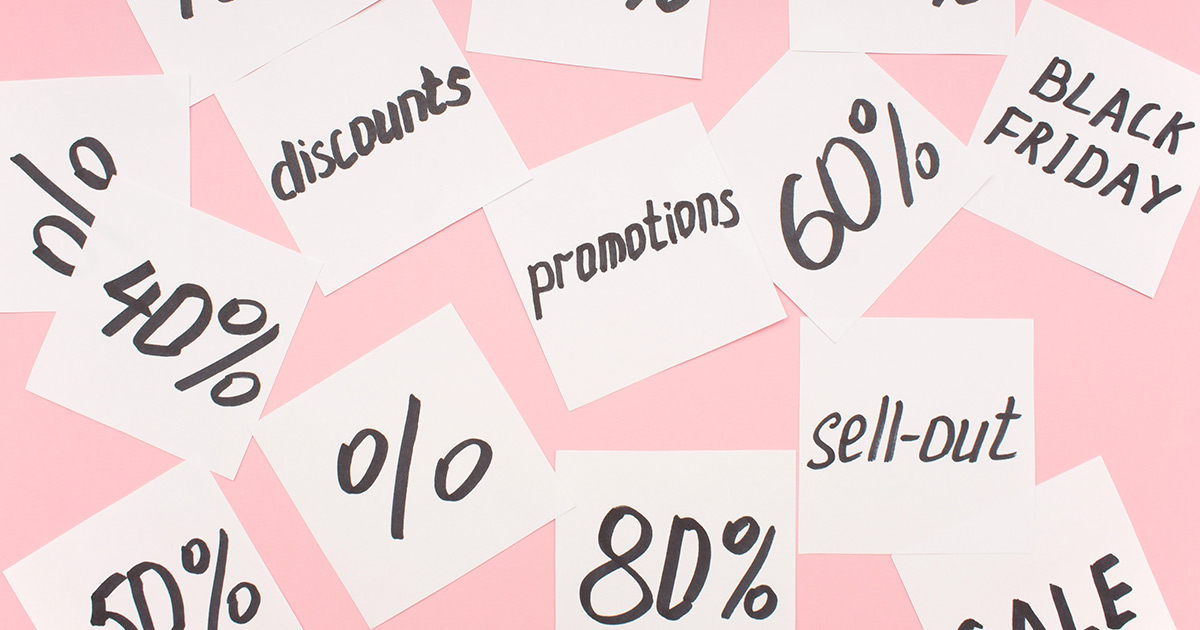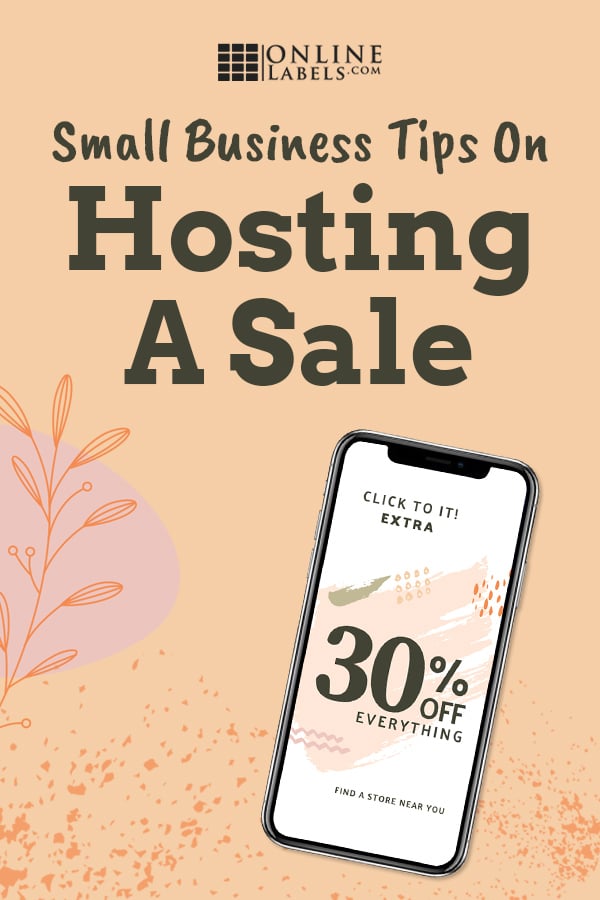How To Run A Successful Sale

Sales, discounts, and promotions are a tried-and-tested method of giving your business a boost, and there are many good reasons they’ve been used since the dawn of marketing.
For one, a sale can be the ideal way to unload any excess stock you may have. This is especially useful if your product has a "use by" limit, or you need some extra storage or shelf space. This also goes for end-of-season sales, which are a great way to free up space for your new season's stock.
Running a sale in what is usually a quiet time of year can be an excellent way of generating cash flow in those leaner months. On the other hand, an introductory sale for a brand new offering is a great way to get your product out there and get early feedback from genuine customers.
Promotional sales are also a great opportunity for upselling and creating awareness of other products you have on offer.
Whatever the reason (or excuse) for your sale, they all have one benefit in common: By selling large quantities of a particular product and bringing customers to your store, you promote traffic. Sales get your brand out into people's hands, into their homes, and onto the tips of their tongues. Think of them as a welcome bonus to your marketing efforts as well as your sales figures.
But, what are the best ways to run a sale and what kind of sale best suits your specific goals? Below, we describe the four types of sales, outline when it's best to use each, and list the most crucial sales strategies to keep in mind.
The 4 Main Sale Types

Sales aren't one-size-fits-all. Continue reading to learn more about the main types: blanket sales, bonuses, brand builders, and promotions.
Blanket Sales
A blanket sale is just like it sounds, a sale that covers all of your stock with one warm, fluffy discount. For example, "30% off everything." These are usually held during holidays and are also known as "storewide percentage discounts."
These types of promotions are easy to implement and definitely move stock off the shelves, but often to the detriment of your profits. A more reasonable way to implement a "percentage discount" sale would be to choose specific items that are replenishable or consumable, and discount just those.
Or, as mentioned before, discount only your end-of-season stock. This type of sale brings customers into the store, and encourages repeat business, helping to mitigate any losses made from the discount.
Bonuses
These types of sales are designed to incentivize consumer behavior by rewarding them for their purchases. They include BOGO (buy one get one), "free gift with purchase over $XX," etc. This type of sale works great for products with a sell-by date or inventory that you want to move quickly in order to free up space.
Sales like this can be useful in the quieter months, when you really want to get some traffic in your store. They also encourage a customer to spend more and thus are very effective at increasing average order size. We cover this topic in more detail in our article on upselling customers.
Brand Builders
Similar to BOGO sales, brand builders give customers rewards for their purchases. They have the added benefit of incentivizing customers to return to your store over and over, increasing the lifetime value of these kinds of sales.
Examples of brand builders include loyalty points and discount cards. They can be used year-round to boost your sales and brand loyalty. You can also include those lucky customers who sign up to these programs in "exclusive VIP promotions" and sneak peeks of upcoming events or new products, to continue to build their loyalty and engagement.
Promotions
These are fun, entertaining events that intend to make a customer feel valued and bring in extra traffic. They include giveaways, doorbusters, and spin-the-wheel promotions.
Doorbusters, for example, are often used on huge spending days like Black Friday. They're basically "loss-leaders," a product sold at a loss with the purpose of getting people into the store to buy other products.
Read on for some important advice about using this kind of promotion, since those "too good to be true" offers can easily end in some hard truths for your bottom line.
A 5-Point Strategy To Plan Your Sales

Now that we've looked at a few types of sales, let's talk strategy. Before you start a sale or promo, there are some logistics to consider. As the old adage goes, "By failing to prepare, you're preparing to fail."
1. Set A Goal
First, lay out your goal. Are you selling off stock, promoting a new product, or trying to entice new customers into your store? It's important to know your overall objective before determining an execution strategy and picking a sale technique.
Think carefully about your aim and strategize accordingly, as it can be easy to slip up and do financial damage.
2. Determine Your Sales Tactic
Re-read the sales types from above and choose the one that best aligns with your goal.
You also want to spend time profiling your target market and appeal to them accordingly. Think how the discount you're offering will be perceived by your customers.
Does $10 off sound better than a 5% discount, even if they are exactly the same thing? Would making a 'countdown to promo ending' feature incentivize your visitors to impulse buy?
3. Pick The Dates
Whether it's a seasonal sale, a one-off flash sale, or a holiday promotion (ie Christmas), time your sale to coincide with your customer's buying habits.
Black Friday and Small Business Saturday (November 27th and 28th in 2020, respectively), are huge shopping days. Take advantage of the fact that the general public is primed to buy on these national sale days and hit them with your best offers!
Do you have a particular product that works well as a Christmas gift? Do you have a slow month each year between seasons when sales taper off? Is "National Candle Day" coming up? (December 5th, FYI!) These are all great opportunities to come up with an awesome promo that will hold your customers' attention and boost your revenue quickly.
Make sure it meshes well with your sale type, though too. A sale that aims to sell off inventory might end when the stock is gone, whereas an "introductory offer" sale might run for the first week from launch. A holiday "flash sale" might last for just 24 or 48 hours.
4. Do The Math
Once you've chosen what type of sale you're going to do and the timeline, sit down and check the numbers (or even better, have your accountant do it). It's surprisingly easy to misjudge a promotional offer. The last thing you want is for your sale or promotion to end up costing you a fortune.
Hoover, the vacuum company, almost bankrupted themselves in the early 90s with a poorly-thought out promotion.
Some sales may use 'loss-leaders' which can be highly effective in getting customers into your store, but make sure the figures add up and that it isn't too risky!
5. Promote It
There's no point in organizing a sale or setting up a promotion if no one hears about it. The most important part of the process is advertising. Shout it from the rooftops!
"We're doing 30% off on my (soon to be 'expired') candles! Get 'em while they're hot!"
Send emails, post on social media, and hang a giant sign in your window. People love bargains. You just have to show them that they're practically making money by taking advantage of your incredible, once-in-a-lifetime offer.
So that's a roundup of our top strategies when running a promotion or sale. We hope they'll be useful for you and save you from making some common mistakes.
If you're reading this in the Fall with the holiday season approaching, learn more about using holiday-themed packaging and prepping for the seasonal rush.




